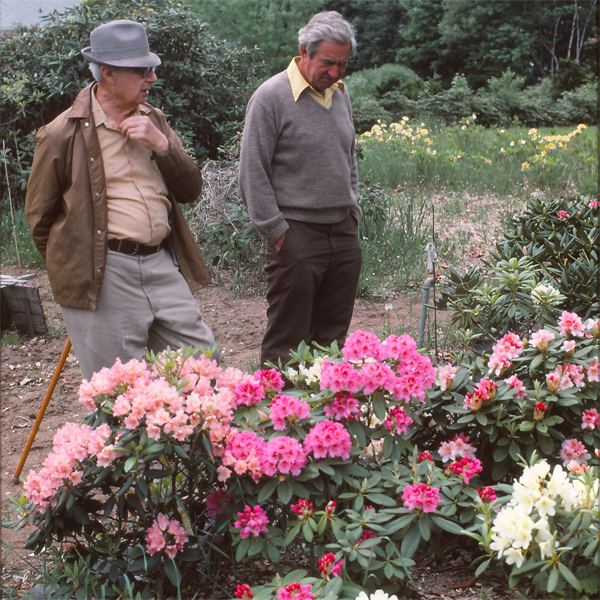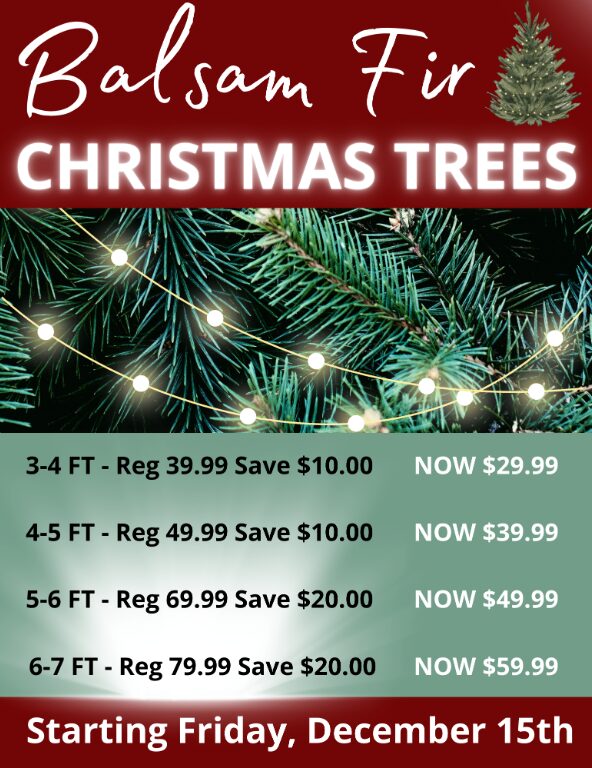By R. Wayne Mezitt, www.hort-sense.com
The genus Rhododendron, dominates the heath family (Ericaceae); it comprises over 1,000 species and is one of the largest genera of woody plants in the world. Native species, both evergreen and deciduous, occur in Europe, North America, Asia and the Pacific islands, with a single species in Australia; but none are indigenous to South America or Africa. First described in writing by Linnaeus in his Species Plantarum in 1753, it wasn’t until the 19th century that details about the genus became more widely documented. Most rhododendron collecting, selecting, growing and hybridizing did not take place until early the 1800’s; England and Europe were the primary centers for these efforts, ultimately resulting in the development of thousands of hybrids.
Rhododendrons and azaleas are among the world’s most popular landscaping choices; they are well-favored for their appealing flowers, attractive foliage and suitability for a range of soil and light conditions. In the northeastern USA when we refer to rhododendrons, most everyone envisions plants like our native large-leaf rhododendrons R. maximum (rosebay rhododendron), R. catawbiense (Catawba rhododendron) and a wide selection of large-leaf hybrid cultivars. Azaleas, for most of us, are generally perceived as being compact, May-flowering semi-evergreen shrubs with small flowers.
Exploring a bit further, the distinction between rhododendrons and azaleas becomes somewhat ambiguous. There are some rhododendrons that drop their leaves in winter or have smaller leaves, and some types appear to grow and perform more like azaleas. And some azaleas are actually deciduous rather than evergreen. Rhododendron classification has evolved over the years as a complex amalgamation of terms and characteristics. Even for expert horticulturists, readily distinguishing between unfamiliar species or hybrids of rhododendrons and azaleas can be vexing.
All azaleas are technically “rhododendrons” but not all rhododendrons are azaleas. Rhododendrons are now technically classified into two groups: “lepidote” or “elepidote”. Lepidote rhododendrons generally have small leaves and they always have tiny scales on the undersides of their leaves. Conversely, the elepidote rhododendrons usually have larger leaves with smooth undersides, and they lack leaf-scales. Azaleas (also classified as elepidotes), generally have small leaves with appressed (parallel to the surface) hairs on the underside of each leaf, most visible along the midrib.
To readily distinguish between rhododendrons and azaleas in bloom, simply count their stamens. Azalea flowers have five stamens, or one per flower-lobe, while rhododendron flowers have 10 (or more) stamens, or two per lobe. Azaleas also tend to have tubular or funnel-shaped flowers, while rhododendron blooms are generally more bell-shaped.
Rhododendron categories
In this article I’m applying my personal observations to simplify designations (see accompanying chart), segmenting rhododendrons into four categories: small-leaf rhododendrons (the lepidotes, but I’m calling them the “Early Rhododendrons” because they’re generally early-spring-flowering), large-leaf rhododendrons, evergreen azaleas and deciduous azaleas. Applying these categories should make it easier for laypeople to understand and differentiate between their features and functions. A sub-section of the deciduous azaleas is a group I’m calling the “Summer Azaleas” because of their bloom period. Early Rhododendrons are arbitrarily designated as those typically in flower before Mother’s Day, and Summer Azaleas as flowering mid-June or later (in Hopkinton, MA). I always try to avoid using the monikers “lepidote” and “elepidote”: for many of our customers these scientific terms are more than they need to know, and worse, sound too much like a disease; and that’s not very helpful for encouraging purchases!
Named hybrids and cultivars
Rhododendrons and azaleas have been popular garden plants since the 19th century, primarily in England and Europe where enthusiasts devoted major efforts to use them in landscapes and begin hybridizing. Nurseries in the USA began listing large-leaf rhododendron and evergreen or deciduous azalea species in the late 1800s, the varieties are mostly grown from seed, rarely hybrids or cultivars.
Named large-leaf rhododendron hybrids were being developed in England starting in the early 1800s, but most were not sufficiently winter hardy for the northeastern American climate. In 1917 Ernest Wilson published a list “Ironclad Rhododendrons”, based upon trials at the Arnold Arboretum; these 14 named hybrids formed the basis for the USA’s first reliably winter-hardy cultivars. Due to propagation difficulties and other factors, it took until mid-century for named cultivars to become commonly available in the USA. Today thousands of choices are readily available.
With the exception of the Wilson rhododendron (R. x laetivirens), very few named hybrids of small-leaf rhododendrons, only seedlings, were widely offered for sale until the 1940s. During my 50-year career as a nurseryman, I feel fortunate to have witnessed and participated in the successful development of numerous small-leaf rhododendron hybrids. In many ways, these exemplify the New England character: tough, hardy, spare, resilient and adaptable to weather extremes. Many turn out to be better suited than some of the more traditional rhododendron categories for today’s landscapes.
The earliest named deciduous azalea hybrids were developed in Belgium and England starting in the early 19th century, but not readily available in the USA until the early 1900’s. Only in recent years has customer interest in named deciduous azalea cultivars begun to rebound; this trend may be due to the current resurgence of interest in native plants; many of the deciduous azaleas are native to the USA.
Some evergreen azalea named hybrids began appearing on the USA market in the late 1800’s, initially from Asia. Most of these were less than reasonably winter hardy for the northeastern USA. Until the early years of the 20th century, Zone 6 or hardier named evergreen azaleas were rare.
The Season Expanders: “Early Rhododendrons” and “Summer Azaleas”
As detailed in the accompanying chart, the small-leaf rhododendrons (I’m terming them “Early Rhododendrons”) offer winter hardiness and adaptability features that other evergreen rhododendrons and azaleas lack. Compared to most large-leaf rhododendrons, they grow more slowly, have a smaller stature, bloom earlier and prefer sunnier locations. As the historic grand estates with their extensive acreage and accompanying unlimited budgets continued their decline, these more refined small-leaf types increased in popularity. People still perceive them as being in many ways similar to evergreen azaleas, but they perform far more successfully in northern garden conditions.
Starting in the 1920’s hybridizers including Joe Gable, Guy Nearing, and into the 1960’s, UConn professor Dr. Gustav Mehlquist, bred and introduced a number of new small-leaf hybrids. More than a dozen of their hybrids including R. ‘Connewago’, ‘Windbeam’, ‘Purple Gem’, ‘Ramapo’, ‘Pioneer’ and Mary Flemming’ came to market, spurred by their smaller-scale suitability for more space-constrained suburban gardens.
After graduating from Cornell with a degree in landscape architecture in 1937, my dad Edmund Mezitt re-joined his dad (Peter J.) and mom (Anna Olga) in the family nursery business. During his growing-up years in the nursery business, Ed had joined with his parents in identifying the best forms of the many species they offered for sale; they harvested seeds and grew seedlings from these superior plants in an effort to improve the resulting offspring. Named cultivars of many plants including azaleas and large-leaf rhododendrons were only then starting to become more available for their customers.
Recognizing improvement potential in the small-leaf types, Ed used Carolina rhododendron as a parent in his first hybridizing attempt: Rhododendron ‘PJM’ was the fortuitous result. Arguably today’s most widely used rhododendron cultivar in this region, ‘PJM’ is readily-recognizable for its vibrant-purple ushering-in-the-spring flowers, distinctively-colored and aromatic winter foliage, hardiness and availability. Over the next four decades Ed made thousands of hybrid crosses, largely focused on improving the features of small-leaf rhododendrons.
One of the challenges for successfully marketing the Early Rhododendrons is their primary feature: they bloom so early in the season. Many homeowners are not ready to visit garden centers until spring is well underway, when the weather becomes more agreeable. Flower color is a primary motivator for purchasing a plant, and by mid-spring the blooms on many of the Early Rhododendrons have faded.
The so-called Summer Azaleas have similar marketplace challenges: by the time they open their flowers so late in spring and into July, many garden center customers are off enjoying their summer vacations, no longer paying as much attention to their yards. The nearby native azaleas that are the parents for most of these azaleas may be in bloom in the local woods and swamps, but potential customers are oblivious about the opportunity for using them in their gardens. And, as with the Early Rhododendrons, it’s difficult for buyers to appreciate their appeal without personally seeing them.
Growing and using rhododendrons today
Over the years considerable effort has been devoted worldwide to increasing the availability and quality of rhododendrons and azaleas. Improved propagation and growing practices using innovative techniques have made them now commonplace on the market. No question, the current availability of so many rhododendron species and hybrids adds inspiring color, excitement and value to our gardens. But with so many choices today, homeowners often need professional guidance to choose the best types to suit their needs and conditions.
Rhododendrons differ significantly in their tolerance to various climate, soil and moisture conditions. Some types may prefer sunny areas, others need shady conditions, and all can vary widely in their winter hardiness, even within the same category. Deer enjoy browsing on rhododendron foliage and buds, creating major challenges for many homeowners. Landscape maintenance requirements are fundamental considerations, particularly with today’s smaller yards and a myriad of other activities competing for the use of our time.
As a horticulturist and rhododendron-lover, it’s evident to me that there’s a compelling need for us, as nursery professionals, to create solutions. We must make it easier and more enjoyable for homeowners to be successful with rhododendrons in their yard. And as with all aspects of gardening in today’s world, it is paramount that our potential customers understand and appreciate the myriad ways horticulture is relevant to the quality of their daily lives.





